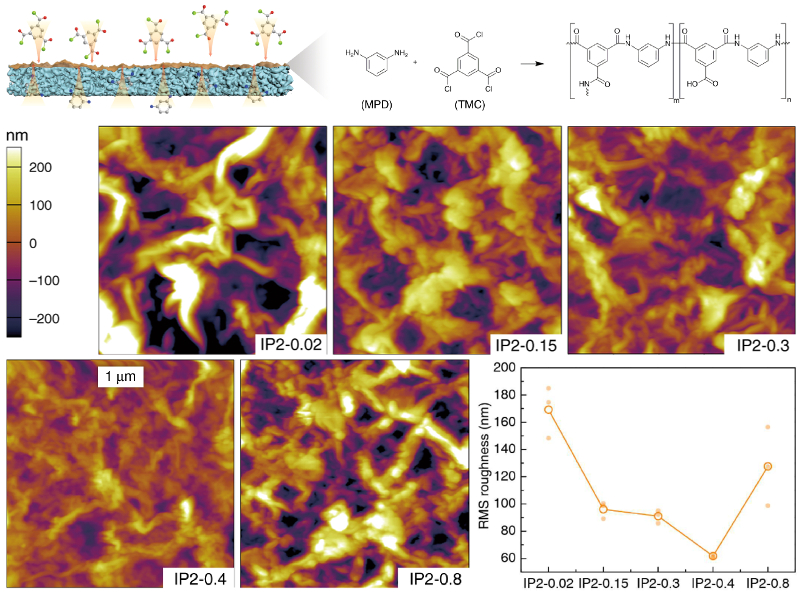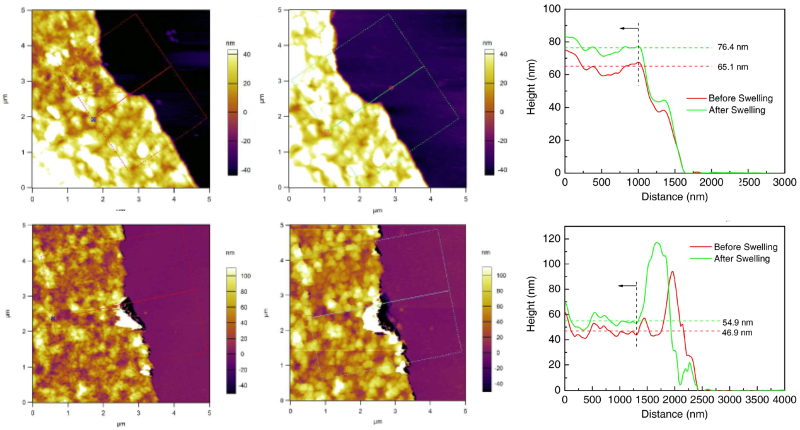AFM Systems
AFM Accessories
Learning
Contact Us
 Part of the Oxford Instruments Group
Part of the Oxford Instruments Group
Researchers created ion-exchange membranes with simultaneously high ion conductivity and high selectivity. Vanadium flow batteries containing the ultrathin, polyamide membranes had much higher power density and enhanced energy efficiency. Imaging with the Cypher AFM gave insight into relations between membrane structure and ion transfer behavior.

Stable, reliable energy storage systems are needed to overcome the intermittent nature of solar- and wind-based power sources. Although vanadium flow batteries are a promising candidate, their power density must be increased to be practical on commercial scales. A key step to increasing power density is development of separation membranes with both high ion selectivity and high ion conductivity
A team led by researchers at the Chinese Academy of Sciences in Dalian report progress on this goal in a publication in Nature Communications. The researchers used interfacial polymerization of trimesoyl chloride (TMC) and m-phenylenediamine (MPD) to create a cross-linked polyamide selective layer on a highly conductive support layer. The composite design resulted in battery efficiencies greater than 80% at a current density of 260 mA/cm2, believed to be a new record.

The researchers used AFM images of surface morphology, along with results from other tools and simulations, to identify the specific proton transfer mechanisms responsible for high performance. They also acquired AFM height images to measure membrane swelling ratios for improved calculations of material density.
The composite design avoids trade-offs between selectivity and conductivity found in thicker, less-connected porous membranes. By beating these trade-offs and improving power density, the membranes could enable low-cost, high-efficiency batteries for renewable energy applications.
The nanoscale structure of membranes prepared with different percentages of TMC was examined by acquiring topography images in contact mode. Topography images were also obtained on selective layers before and after immersion in N,N-dimethylacetamide to measure swelling ratio. The low noise floor and high spatial resolution of Cypher AFMs ensured accurate measurements in both vertical and lateral dimensions. In addition, the Cypher’s built-in software streamlined calculation of surface roughness and the analysis of line sections in swelling experiments.
Citation: Q. Dai, Z. Liu, L. Huang et al., Thin-film composite membrane breaking the trade-off between conductivity and selectivity for a flow battery. Nat. Commun. 11, 13 (2020). https://doi.org/10.1038/s41467-019-13704-2
Note: The original article featured above was published as Open Access under a Creative Commons license. The data shown here is reused under fair use of the original article, which can be accessed through the article link above.
